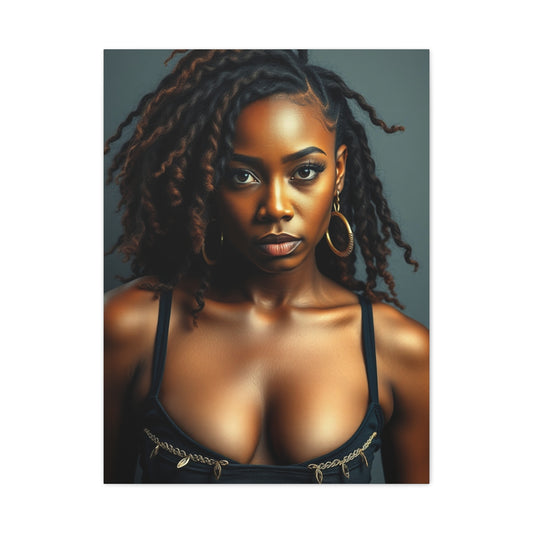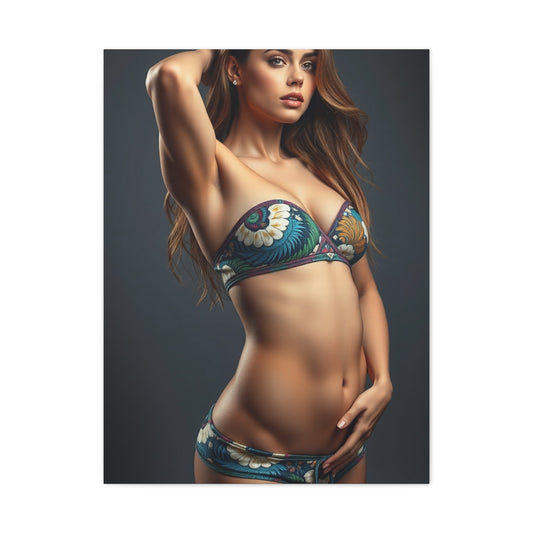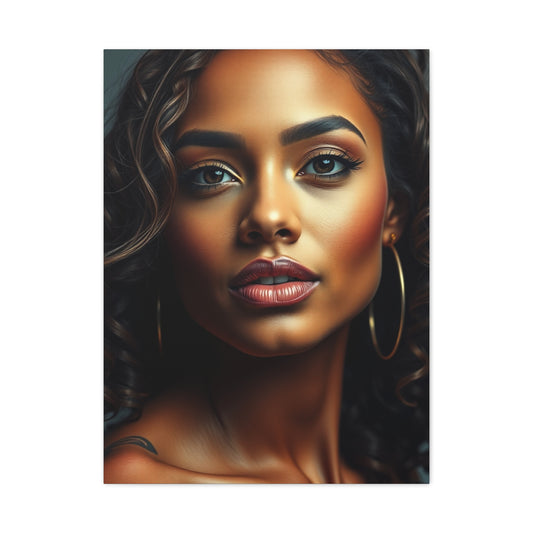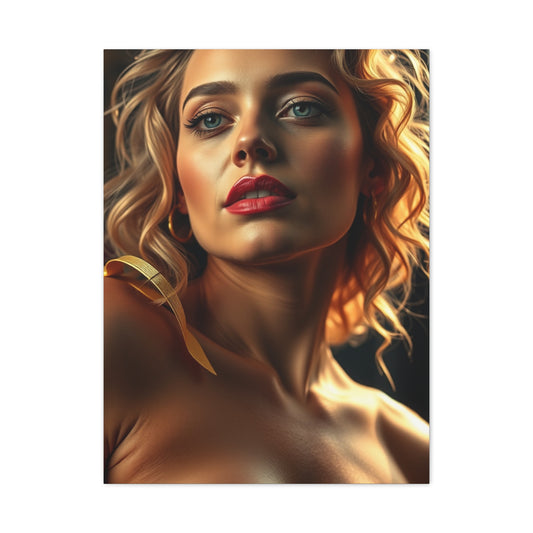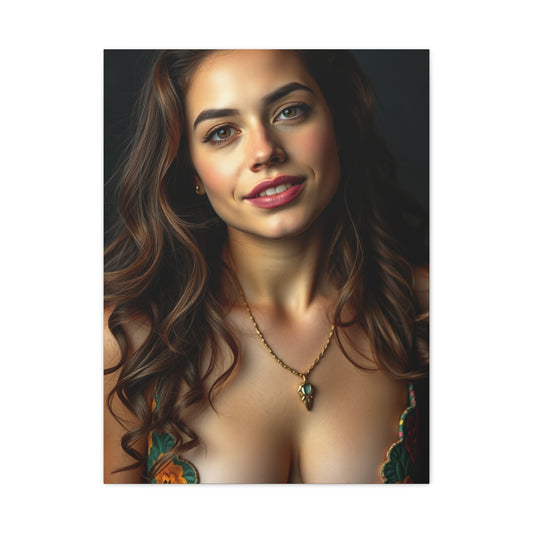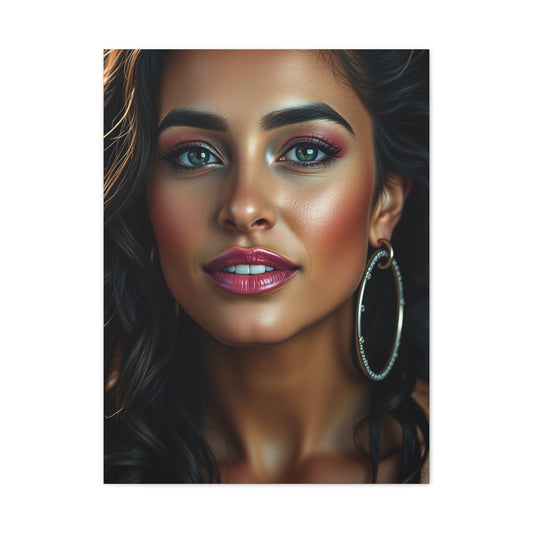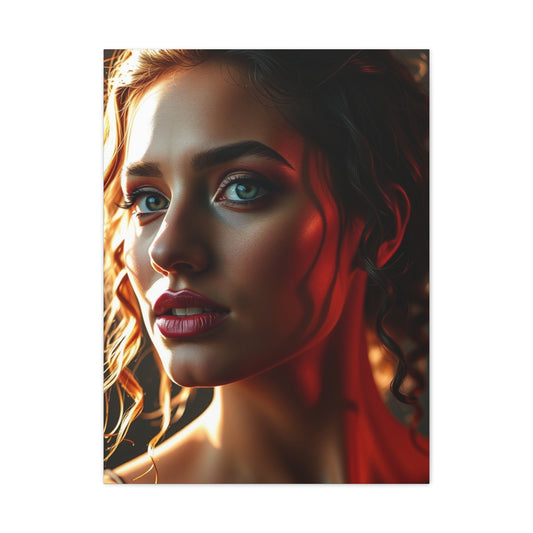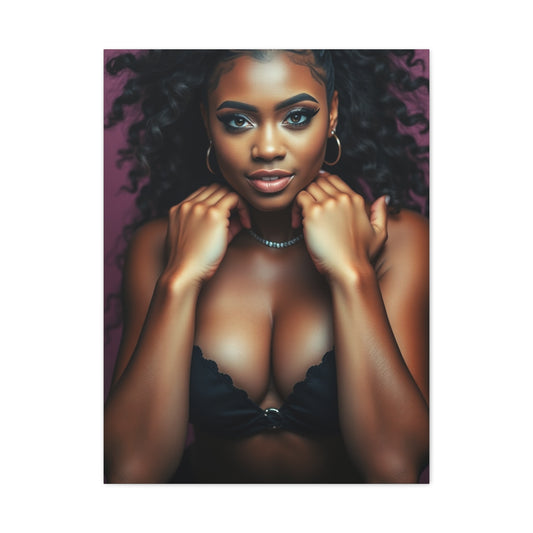The Essential Guide to Body Positive Wall Art: Celebrating Diverse Representation in Visual Expression
The contemporary artistic landscape has witnessed a revolutionary transformation in how human forms are portrayed and celebrated through visual mediums. Body positive wall art has emerged as a powerful movement that challenges conventional beauty standards while promoting inclusivity and self-acceptance across all demographics. This form of art represents more than decoration; it is a cultural statement that validates diverse body types, celebrates individuality, and sparks meaningful dialogue about identity, representation, and acceptance. Incorporating body positive art into our living spaces, galleries, and creative practices is not simply an aesthetic choice—it embodies a societal shift toward honoring authentic human diversity in all its forms.
At its core, body positive wall art challenges the long-standing narrative that beauty must conform to narrow ideals. For decades, mainstream art, fashion, and media predominantly celebrated thin, youthful, and Eurocentric features, often marginalizing bodies that fell outside those parameters. The body positivity movement, however, reclaims space for those who have historically been excluded. Through vibrant, expressive, and often unapologetic visual representation, body positive art showcases a spectrum of shapes, sizes, skin tones, genders, and abilities. This inclusivity reminds viewers that beauty is not defined by a single archetype but rather flourishes in diversity. When displayed on walls, such artwork becomes both a personal affirmation and a public declaration that every body has inherent value.
Another essential dimension of body positive wall art lies in its power to reshape environments. In private homes, these works foster self-acceptance by serving as daily reminders that beauty is not conditional. A portrait of a curvy figure, a dynamic abstract composition celebrating stretch marks, or a mural highlighting different skin tones can cultivate an atmosphere of compassion and empowerment. In professional settings such as therapy offices, wellness studios, and workplaces, body positive art sends a message of inclusivity, signaling to clients, employees, or visitors that they are welcomed as they are. Even in public galleries, exhibitions that prioritize body-positive themes spark conversations that challenge cultural norms, inviting audiences to reflect on their own perceptions of beauty and representation.
The artistry itself takes many different forms. Some works embrace realism, capturing the fine details of human imperfection as a testament to authenticity. Others lean toward abstract expression, using color, line, and form to symbolize liberation from restrictive ideals. Still others incorporate humor, symbolism, or surrealism to push the boundaries of how bodies are imagined and represented. This diversity in artistic approaches reflects the very philosophy the movement embodies: there is no single correct way to depict or appreciate the human form. Whether rendered through digital illustrations, traditional paintings, or even mixed-media installations, body positive wall art embodies a universal call for acceptance and visibility.
The cultural significance of body positive wall art cannot be overstated. In an age where social media often amplifies unrealistic beauty expectations, having imagery that celebrates authenticity becomes an act of resistance. Such art has the potential to counterbalance the harmful effects of filtered, idealized images by offering more relatable, humanized perspectives. For younger generations especially, being exposed to inclusive and diverse art can nurture healthier self-images, reducing the risk of internalizing narrow beauty standards. Beyond the personal, this movement also strengthens community connections, encouraging solidarity among those who see their identities reflected and validated through visual representation.
Understanding the Foundational Principles of Body Acceptance in Visual Arts
The conceptual framework surrounding body acceptance in artistic expression extends far beyond superficial interpretations often misconstrued by mainstream discourse. Contrary to prevalent misconceptions that suggest this movement exclusively promotes specific weight categories or dismisses health considerations, authentic body acceptance encompasses a holistic appreciation for human anatomical diversity in all its magnificent variations.
This philosophical approach acknowledges that human physiques naturally exist across an extraordinary spectrum of characteristics. Whether individuals possess petite or voluminous frames, towering or compact statures, visible disabilities, or unique anatomical features, each configuration deserves recognition, respect, and artistic representation. The movement fundamentally recognizes that our physical vessels undergo continuous metamorphosis throughout our lifespans—expanding, contracting, healing, aging, and transforming in response to countless internal and external influences.
Rather than harboring resentment or dissatisfaction toward our corporeal existence, this paradigm encourages embracing our authentic physical reality with compassion and appreciation. The philosophy extends beyond mere tolerance to active celebration of bodily diversity, recognizing that our differences contribute to the rich tapestry of human experience rather than representing deviations from an arbitrary standard.
The psychological implications of this acceptance prove profound, as individuals learn to view their bodies as worthy vessels deserving care and respect regardless of conformity to societal expectations. This mindset shift creates ripple effects that influence self-esteem, mental health, interpersonal relationships, and overall life satisfaction. When applied to artistic expression, these principles transform creative spaces into sanctuaries of acceptance and validation.
The Critical Importance of Inclusive Representation in Contemporary Artistic Expression
Artistic representation wielding the power to shape cultural perceptions and individual self-concept cannot be underestimated in its societal influence. When creative works consistently exclude certain body types or present narrow interpretations of human beauty, they inadvertently communicate messages about worth, desirability, and social acceptance. Conversely, inclusive artistic representation creates opportunities for viewers to encounter themselves reflected in creative works, fostering connection and validation.
The significance of diverse bodily representation in art transcends mere aesthetic considerations, delving into psychological territory where representation directly impacts mental health outcomes. Research consistently demonstrates that exposure to diverse body types through visual media correlates with improved body image satisfaction among viewers, particularly those who have historically been underrepresented in mainstream artistic expressions.
Furthermore, inclusive representation challenges artists to expand their technical skills and creative horizons. Drawing, painting, or sculpting diverse body types requires understanding various anatomical structures, proportional relationships, and aesthetic approaches. This technical expansion enhances artistic versatility while pushing creators beyond comfortable familiarity zones into territories of greater creative complexity and richness.
The educational value of diverse representation extends to audiences who encounter unfamiliar body types through artistic works. These encounters foster empathy, understanding, and appreciation for human diversity while dismantling prejudices and stereotypes that may have developed through limited exposure to varied human forms. Art becomes a vehicle for social education and cultural transformation.
Breaking Free from Restrictive Societal Beauty Standards Through Creative Expression
Contemporary society propagates remarkably narrow definitions of physical attractiveness through various media channels, creating unrealistic expectations that influence individual self-perception and interpersonal judgments. These standardized beauty ideals often exclude vast portions of the population, leaving many individuals feeling inadequate or invisible within cultural narratives.
Artistic expression possesses unique capabilities to challenge and subvert these restrictive standards by presenting alternative visions of human beauty that celebrate rather than marginalize diversity. When creators consciously choose to depict varied body types, they participate in cultural resistance against homogenized beauty standards while contributing to broader conversations about acceptance and inclusion.
The media landscape frequently perpetuates negative associations with non-conforming body types, either through explicit ridicule or subtle omission from positive representations. These patterns create psychological harm by suggesting that certain individuals are less worthy of love, respect, or artistic attention. Body positive wall art directly counters these harmful messages by positioning diverse bodies as subjects worthy of artistic celebration.
Breaking free from societal constraints requires conscious effort and persistent practice, as creators must overcome internalized biases and challenge their own artistic assumptions. This process involves examining personal preferences, questioning learned aesthetic judgments, and actively seeking exposure to diverse human forms through various resources and experiences.
Historical Precedents for Diverse Body Representation in Classical and Contemporary Art
Throughout art history, numerous creators have challenged prevailing beauty standards of their respective eras by depicting bodies that diverged from conventional expectations. These historical precedents provide contemporary artists with powerful examples of how diverse representation can create lasting cultural impact while producing aesthetically compelling works.
Peter Paul Rubens exemplifies this tradition through his celebrated paintings featuring full-figured women during an era when such representations challenged artistic norms. His work demonstrated that beauty could be found in forms that differed from the slender ideals promoted by other contemporary artists. The term "Rubenesque" entered common vocabulary as a positive descriptor for curvaceous feminine forms, illustrating how artistic representation can influence linguistic and cultural evolution.
Similarly, artists like Lucian Freud depicted raw, unidealized human forms that emphasized texture, weight, and authentic physicality over conventional prettiness. His approach revealed beauty in aging, imperfection, and corporeal reality, expanding viewers' understanding of what could be considered aesthetically valuable or emotionally moving.
Contemporary artists continue this tradition by incorporating diverse bodies into various mediums including painting, sculpture, photography, digital art, and mixed media installations. These modern creators utilize advanced techniques and platforms to reach broader audiences while advocating for inclusive representation through their artistic choices.
The historical trajectory of body representation in art reveals cyclical patterns where certain periods embrace diversity while others retreat into narrow idealization. Understanding these patterns helps contemporary creators recognize their role in shaping current and future cultural attitudes toward human diversity through their artistic decisions.
Empowering Artists to Expand Their Creative Horizons Through Anatomical Diversity
Artistic growth occurs when creators challenge themselves to explore unfamiliar territories and develop new skills through varied practice. Depicting diverse body types provides countless opportunities for technical advancement while fostering creative expansion that benefits both individual artists and their audiences.
Understanding anatomical variations requires studying proportional relationships, muscle distribution, fat placement, bone structure, and countless other physical characteristics that vary significantly among individuals. This comprehensive approach to human form study develops observational skills, technical precision, and aesthetic sensitivity that enhance overall artistic capabilities.
The process of learning to accurately and respectfully represent diverse bodies also cultivates empathy and cultural awareness within artists. As creators spend time observing and studying various human forms, they develop deeper appreciation for the complexity and beauty inherent in physical diversity. This emotional and intellectual growth enriches their artistic perspective while informing future creative decisions.
Practical application of diverse body representation also improves problem-solving abilities as artists encounter new technical challenges related to proportion, shading, composition, and visual balance. Each unique body type presents distinct artistic puzzles that require creative solutions, fostering innovation and adaptability.
Additionally, incorporating body diversity into artistic practice prepares creators for professional opportunities in fields such as illustration, character design, animation, and conceptual art where diverse representation is increasingly valued and requested by clients and audiences.
Utilizing Available Resources for Anatomical Reference and Artistic Inspiration
Contemporary artists benefit from unprecedented access to diverse anatomical references through various digital and physical resources. Online platforms provide extensive collections of reference images featuring individuals of all body types, ages, ethnicities, and physical abilities. These resources enable artists to study authentic human diversity while developing their representational skills.
Photography collections specifically curated for artistic reference offer high-quality images that capture lighting, proportion, and detail necessary for accurate artistic reproduction. Many of these resources are created collaboratively with models who specifically consent to artistic use, ensuring ethical sourcing while supporting inclusive representation efforts.
Life drawing sessions and figure drawing classes increasingly emphasize diverse model representation, providing artists with opportunities to practice observational skills while working with live subjects. These experiences offer dynamic learning opportunities that static references cannot replicate, including the ability to observe movement, gesture, and three-dimensional form relationships.
Personal reference sources, including self-portraiture and collaborative work with friends or family members, provide intimate opportunities for studying familiar forms while building comfort with diverse representation. Many artists discover that using themselves or loved ones as references creates more authentic and emotionally resonant artistic works.
Academic anatomy resources, medical illustrations, and scientific publications offer detailed information about physical variations, disabilities, and anatomical differences that can inform more accurate and respectful artistic representation. These resources help artists understand the mechanics behind diverse body types while avoiding stereotypical or inaccurate portrayals.
Technical Skill Development Through Diverse Figure Study and Practice
Mastering diverse body representation requires developing sophisticated technical abilities that extend far beyond basic figure drawing fundamentals. Artists must learn to recognize and accurately depict the subtle variations that distinguish different body types while maintaining anatomical accuracy and aesthetic appeal.
Understanding proportional relationships becomes more complex when working with diverse figures, as traditional proportion rules often fail to account for natural human variation. Artists must develop flexible approaches to proportion that can accommodate different heights, weights, bone structures, and physical characteristics while maintaining visual harmony within their compositions.
Shading and modeling techniques require adaptation when depicting various skin tones, textures, and surface qualities found across diverse bodies. Different skin types reflect light differently, requiring artists to understand how to achieve accurate representation while avoiding stereotypical or offensive portrayals.
Color theory application becomes more nuanced when representing diverse skin tones, as artists must learn to see and mix subtle color variations that accurately reflect human diversity. This skill development extends beyond basic color mixing to include understanding how different pigments interact and how cultural contexts influence color perception.
Gesture and movement studies benefit from exposure to diverse body types, as different physical structures create distinct movement patterns and postural characteristics. Artists who practice with varied figures develop more sophisticated understanding of human kinetics and expression.
Character Development and Narrative Enhancement Through Physical Diversity
In illustration, animation, and conceptual art, diverse body representation serves crucial narrative functions that extend beyond mere visual appeal. Characters with varied physical characteristics create more believable fictional worlds while allowing audiences to connect with stories on deeper emotional levels.
Character design benefits enormously from physical diversity, as different body types can communicate personality traits, backgrounds, occupations, and life experiences without requiring explicit exposition. A character's physique becomes a storytelling tool that adds depth and authenticity to narrative development.
Audience identification increases significantly when fictional characters represent diverse body types, as viewers can more easily see themselves reflected in the stories they consume. This connection enhances emotional investment while creating more inclusive entertainment experiences.
World-building in fantasy, science fiction, and contemporary settings gains authenticity when populated with physically diverse characters. Homogeneous character designs create unrealistic fictional environments that fail to reflect natural human variation or cultural diversity.
Commercial applications in advertising, marketing, and product design increasingly demand diverse representation as companies recognize the business value of inclusive imagery. Artists who develop skills in diverse representation position themselves advantageously in evolving market conditions.
Psychological Impact and Therapeutic Benefits of Inclusive Artistic Expression
The psychological effects of creating and viewing diverse body representation in art extend far beyond aesthetic appreciation, touching fundamental aspects of mental health, self-esteem, and social connection. For artists, the practice of inclusive representation often leads to personal transformation and enhanced self-acceptance.
Creating art that celebrates diverse bodies requires artists to examine their own biases and preconceptions about beauty, worth, and desirability. This introspective process often leads to greater self-compassion and acceptance of personal physical characteristics that may have previously caused distress or dissatisfaction.
The meditative aspects of careful observational drawing or painting of diverse figures can serve therapeutic functions, allowing artists to develop more nuanced and appreciative relationships with human physicality. This practice often translates into improved body image and reduced appearance-related anxiety.
For viewers, encountering positive representations of bodies similar to their own can provide profound validation and emotional relief, particularly for individuals who have experienced marginalization or negative messaging about their physical characteristics. These artistic encounters can serve as powerful affirmations of worth and belonging.
The social benefits of inclusive representation extend to broader community healing, as diverse artistic expression helps normalize human variation while challenging harmful stereotypes and prejudices that contribute to discrimination and social exclusion.
Cultural Transformation Through Artistic Advocacy and Visual Activism
Body positive wall art functions as a form of visual activism that contributes to broader cultural transformation by challenging dominant narratives and creating alternative visions of human worth and beauty. Artists who engage in this work become advocates for social change while using their creative platforms to promote inclusion and acceptance.
The cumulative effect of multiple artists creating diverse representations builds cultural momentum toward greater acceptance and celebration of human diversity. Each piece of inclusive art contributes to a larger movement that gradually shifts societal attitudes and expectations.
Educational institutions, healthcare facilities, corporate offices, and public spaces that display diverse body representation communicate values of inclusion and acceptance to their communities. These environmental messages influence cultural norms while creating more welcoming spaces for all individuals.
The commercial success of body positive artwork demonstrates market demand for inclusive representation while encouraging other artists and organizations to prioritize diversity in their creative and business decisions. Economic validation provides practical motivation for continued expansion of inclusive artistic practices.
Community Building and Social Connection Through Shared Artistic Values
The body positive art movement creates communities of artists, viewers, and advocates who share values of inclusion, acceptance, and celebration of human diversity. These communities provide support, inspiration, and collaboration opportunities that strengthen individual and collective efforts toward greater representation.
Online communities dedicated to body positive art offer platforms for sharing work, exchanging resources, providing feedback, and building professional networks. These digital spaces connect geographically dispersed individuals while fostering collaboration and mutual support.
Gallery exhibitions, art fairs, and public installations featuring diverse body representation create physical gathering spaces where communities can celebrate inclusive art while engaging in meaningful conversations about representation, acceptance, and social change.
Educational workshops, masterclasses, and mentorship programs focused on diverse representation help expand the community of artists capable of creating inclusive work while ensuring that skills and knowledge transfer to future generations of creators.
Overcoming Creative Challenges and Artistic Growth Through Diverse Practice
Artists who commit to diverse body representation inevitably encounter creative challenges that push them beyond comfortable familiarity zones while fostering significant artistic growth and development. These challenges become opportunities for innovation and skill expansion.
Technical difficulties related to proportion, anatomy, and composition require creative problem-solving that enhances overall artistic capabilities. Artists develop greater flexibility and adaptability while building confidence in their ability to tackle complex representational challenges.
Compositional challenges arise when incorporating diverse bodies into artistic arrangements, requiring artists to reconsider traditional aesthetic principles while developing more inclusive approaches to visual balance and harmony.
Cultural sensitivity considerations require artists to research and understand the communities they wish to represent, fostering cross-cultural knowledge while building respectful collaborative relationships with diverse individuals and groups.
The vulnerability required to create authentic, diverse representation often pushes artists beyond superficial artistic choices toward deeper emotional and spiritual engagement with their creative practice.
Professional Opportunities and Career Development in Inclusive Art Markets
The growing demand for diverse representation across industries creates expanding professional opportunities for artists skilled in inclusive body positive artwork. Understanding these market trends helps artists position themselves strategically while building sustainable creative careers.
Publishing industries increasingly seek illustrators capable of creating diverse characters for children's books, young adult literature, textbooks, and graphic novels. Artists with strong diverse representation skills find consistent work in these expanding markets.
Advertising and marketing agencies prioritize diverse imagery as companies recognize the business value of inclusive representation. Freelance artists who can provide authentic diverse artwork command premium rates while building long-term client relationships.
Entertainment industries including film, television, gaming, and animation require concept artists, character designers, and storyboard artists capable of creating believable diverse characters and environments.
Fine art markets show growing appreciation for body positive artwork, with galleries, collectors, and museums increasingly acquiring and exhibiting inclusive representations. Artists building bodies of work around diverse themes find supportive market reception.
Digital Age Opportunities and Online Platform Utilization for Inclusive Art
Contemporary digital platforms provide unprecedented opportunities for artists to share body positive wall art with global audiences while building supportive communities around inclusive representation values. Understanding how to effectively utilize these platforms maximizes artistic reach and impact.
Social media platforms enable artists to share work-in-progress documentation, finished pieces, and behind-the-scenes content that educates audiences about diverse representation while building engaged follower communities.
Online marketplaces allow artists to sell prints, original works, and digital downloads of body positive artwork directly to consumers who actively seek inclusive representation for their homes, offices, and personal collections.
Digital art platforms and NFT marketplaces create new revenue streams while enabling artists to reach tech-savvy collectors interested in supporting diverse representation through their purchasing decisions.
Educational platforms provide opportunities for artists to teach diverse representation techniques through online courses, tutorials, and workshops that generate income while spreading inclusive artistic practices.
Environmental Impact and Sustainable Practices in Body Positive Art Creation
Contemporary artists increasingly consider environmental sustainability alongside social inclusivity, recognizing that responsible artistic practices encompass both cultural and ecological considerations. Sustainable body positive art creation aligns with broader values of care and responsibility.
Material choices significantly impact environmental footprints, with artists exploring eco-friendly paints, papers, canvases, and other supplies that minimize ecological harm while maintaining artistic quality and longevity.
Digital art creation reduces material consumption while enabling infinite reproduction without additional resource usage. Artists can create body positive digital works that reach global audiences without environmental costs associated with physical materials and shipping.
Local sourcing of materials and models reduces transportation-related environmental impacts while supporting regional economies and building community connections.
Longevity considerations in artwork creation ensure that pieces remain relevant and appealing over time, reducing waste associated with disposable or trend-dependent artistic works.
Educational Integration and Academic Advancement of Inclusive Art Practices
Educational institutions play crucial roles in advancing body positive representation by integrating inclusive practices into art curricula while preparing future generations of artists to create diverse, representative work.
Art schools increasingly emphasize diverse representation in figure drawing classes, illustration programs, and fine arts curricula, ensuring that emerging artists develop inclusive skills from early stages of their education.
Research initiatives investigating the psychological, social, and cultural impacts of diverse artistic representation contribute to academic understanding while informing evidence-based advocacy for inclusive practices.
Community outreach programs connecting educational institutions with diverse populations create mutually beneficial relationships that provide authentic reference opportunities for students while offering artistic services to underrepresented communities.
Professional development workshops for practicing artists expand skills in diverse representation while building networks of practitioners committed to inclusive artistic practices.
Economic Considerations and Market Dynamics in Body Positive Art Sales
Understanding economic factors influencing body positive art markets helps artists make informed decisions about pricing, production, and marketing strategies while building sustainable creative careers around inclusive representation.
Consumer demographics show increasing demand for diverse representation across age groups, ethnicities, and socioeconomic backgrounds, indicating broad market appeal for body positive artwork.
Price points for body positive artwork vary significantly based on medium, size, artist reputation, and market positioning, requiring artists to research comparable sales while developing competitive pricing strategies.
Corporate purchasing patterns show growing interest in diverse artwork for office spaces, healthcare facilities, and public installations as organizations prioritize inclusive environmental messaging.
Investment potential in body positive artwork appears strong as cultural attitudes shift toward greater acceptance of diversity, suggesting long-term value appreciation for well-executed inclusive pieces.
Therapeutic Applications and Healing Properties of Inclusive Artistic Expression
Body positive wall art serves important therapeutic functions in healthcare settings, counseling environments, and personal healing spaces where visual representation can support recovery and emotional wellbeing.
Medical facilities utilizing diverse body representation in their artwork help patients feel more comfortable and accepted while receiving healthcare services, particularly in specialties dealing with body image concerns.
Mental health settings benefit from inclusive artwork that validates diverse experiences while challenging negative self-perceptions that may contribute to psychological distress.
Eating disorder treatment facilities increasingly recognize the importance of diverse body representation in supporting recovery by challenging unrealistic beauty standards that often contribute to disordered eating behaviors.
Personal healing spaces in homes benefit from body positive artwork that reinforces self-acceptance messages while creating emotionally supportive environments for daily living.
Global Perspectives and Cross-Cultural Considerations in Body Positive Art
Body positive representation varies significantly across cultures, requiring artists to understand diverse cultural contexts while respecting different traditions and values related to body image and artistic expression.
Western beauty standards differ substantially from those found in other cultural contexts, necessitating research and sensitivity when creating artwork intended for diverse global audiences.
Historical beauty ideals from various cultures provide rich inspiration for contemporary body positive artwork while challenging Eurocentric aesthetic assumptions that dominate much Western art.
Collaborative approaches with artists from diverse cultural backgrounds ensure authentic representation while fostering cross-cultural understanding and artistic exchange.
Religious and spiritual considerations may influence how diverse bodies are appropriately represented in different cultural contexts, requiring respectful consultation with community members and spiritual leaders.
Future Directions and Emerging Trends in Inclusive Artistic Expression
The evolution of body positive wall art is far from complete. As society’s understanding of identity, representation, and inclusivity deepens, new avenues continue to open for artistic exploration. The cultural momentum behind body positivity reflects broader social movements that challenge traditional narratives, creating space for art to act as both a mirror and a catalyst for change. What began as a counter-response to narrow beauty standards has grown into a global dialogue about authenticity, diversity, and human dignity, and this dialogue is shaping the next generation of creative expression in remarkable ways.
One of the most exciting influences on the future of inclusive art is technological innovation. The rapid development of virtual reality (VR), augmented reality (AR), and artificial intelligence (AI) offers new opportunities for audiences to experience body positive narratives in deeply immersive ways. Instead of merely observing a static piece of wall art, viewers may soon be able to step inside digital installations that allow them to interact with diverse representations of the human form. AR applications could project inclusive art directly into living spaces, giving individuals the chance to personalize their environments with shifting, adaptive images that reflect a wide spectrum of bodies and identities.
Generational attitudes toward body image and diversity also play a significant role in shaping future directions. Younger generations, particularly Gen Z and beyond, tend to embrace inclusivity with greater openness, rejecting outdated stereotypes and celebrating individuality. This shift suggests that demand for body positive art will continue to grow, not just as a niche movement but as a mainstream expectation. As cultural awareness deepens, the market for inclusive wall art will likely expand across households, public institutions, and commercial environments, making it a standard element of contemporary interior design rather than an exception. The normalization of diverse representation in visual culture may, over time, create a new aesthetic standard where variety itself is recognized as beautiful.
Another promising trend lies in interdisciplinary collaboration. Artists are increasingly working alongside psychologists, healthcare professionals, and social activists to create projects that go beyond visual appeal to serve therapeutic and social functions. For example, body positive art installations in hospitals, therapy centers, or schools can provide healing spaces that foster acceptance and resilience. Collaborations with activists may transform public spaces into platforms for social change, using murals, digital projections, or community-driven projects to challenge stigma and promote dialogue.
On a global scale, international cooperation and cultural exchange programs are also influencing how body positive art evolves. While the principles of inclusivity and diversity are universal, their expressions are often shaped by local traditions, histories, and values. Cultural exchange allows artists from different backgrounds to share their perspectives while learning from one another, enriching the global landscape of inclusive art. For instance, a collaboration between European and African artists might highlight different cultural understandings of body image, merging traditional motifs with contemporary themes to create artwork that resonates across continents.
Conclusion:
The journey toward comprehensive body positive wall art representation encompasses far more than simple aesthetic choices or trending social movements. It embodies a fundamental transformation in how we perceive, value, and celebrate the magnificent diversity of human physical expression. Through carefully considered artistic choices, creators possess the extraordinary power to reshape cultural narratives, heal individual wounds, and build more inclusive communities that honor every person's inherent worth and beauty.
The evidence overwhelmingly demonstrates that inclusive artistic representation generates profound benefits across multiple dimensions of human experience. Psychologically, diverse body representation in art validates individual experiences while challenging harmful stereotypes that contribute to mental health struggles and social marginalization. Culturally, these artistic choices participate in broader movements toward acceptance and inclusion that benefit entire societies. Professionally, artists who develop skills in diverse representation position themselves advantageously in evolving markets that increasingly demand authentic, inclusive content.
The historical precedents established by masters like Peter Paul Rubens remind us that challenging beauty standards through art represents a noble tradition rather than contemporary innovation. Today's body positive artists continue this legacy while utilizing modern tools, platforms, and understanding to reach broader audiences with messages of acceptance and celebration. The technical skills developed through diverse figure study enhance artistic capabilities while fostering empathy, cultural awareness, and emotional intelligence that enrich both personal and professional artistic practice.
The therapeutic applications of body positive wall art extend its impact beyond aesthetic appreciation into realms of healing and transformation. Healthcare facilities, educational institutions, and personal spaces benefit enormously from inclusive representation that creates environments of acceptance and validation. These applications demonstrate art's capacity to serve healing functions while contributing to community wellbeing and social progress.
Looking toward the future, emerging technologies and evolving social attitudes promise continued expansion of opportunities for body positive artistic expression. Virtual reality experiences, augmented reality installations, and artificial intelligence applications offer exciting possibilities for immersive inclusive representation that could revolutionize audience engagement with diverse artwork. Simultaneously, growing global awareness of diversity and inclusion creates expanding markets for artists committed to authentic, respectful representation of human variation.
The economic viability of body positive art continues strengthening as consumer preferences shift toward inclusive imagery and organizations recognize the business value of diverse representation. This market evolution provides practical motivation for artistic exploration while validating the cultural importance of inclusive creative expression. Artists who invest in developing diverse representation skills position themselves strategically for long-term career success while contributing to meaningful social transformation.
The environmental considerations increasingly influencing artistic practice align naturally with body positive values, as both movements emphasize care, sustainability, and responsibility toward communities and ecosystems. Sustainable artistic practices complement inclusive representation by demonstrating comprehensive commitment to values of care and respect for all forms of life and diversity.
Educational integration of body positive art practices ensures that future generations of artists develop inclusive skills while understanding the social responsibility inherent in creative expression. Academic research supporting these practices provides evidence-based validation for approaches that artists and advocates have long understood intuitively. This scholarly foundation strengthens arguments for continued expansion of diverse representation while informing best practices for authentic, respectful artistic expression.
The global perspectives essential to truly inclusive body positive art remind us that diversity encompasses far more than physical characteristics, extending into cultural, spiritual, and experiential realms that require ongoing learning and humble collaboration. Artists committed to authentic representation must remain open to growth, feedback, and partnership with communities they wish to honor through their creative work.
Ultimately, body positive wall art represents a powerful tool for social transformation that operates through beauty, inspiration, and emotional connection rather than confrontation or argument. By creating visually compelling celebrations of human diversity, artists contribute to cultural healing while building bridges of understanding and acceptance across communities. The cumulative effect of countless artists making conscious choices toward inclusion creates momentum for broader social change that benefits everyone.

